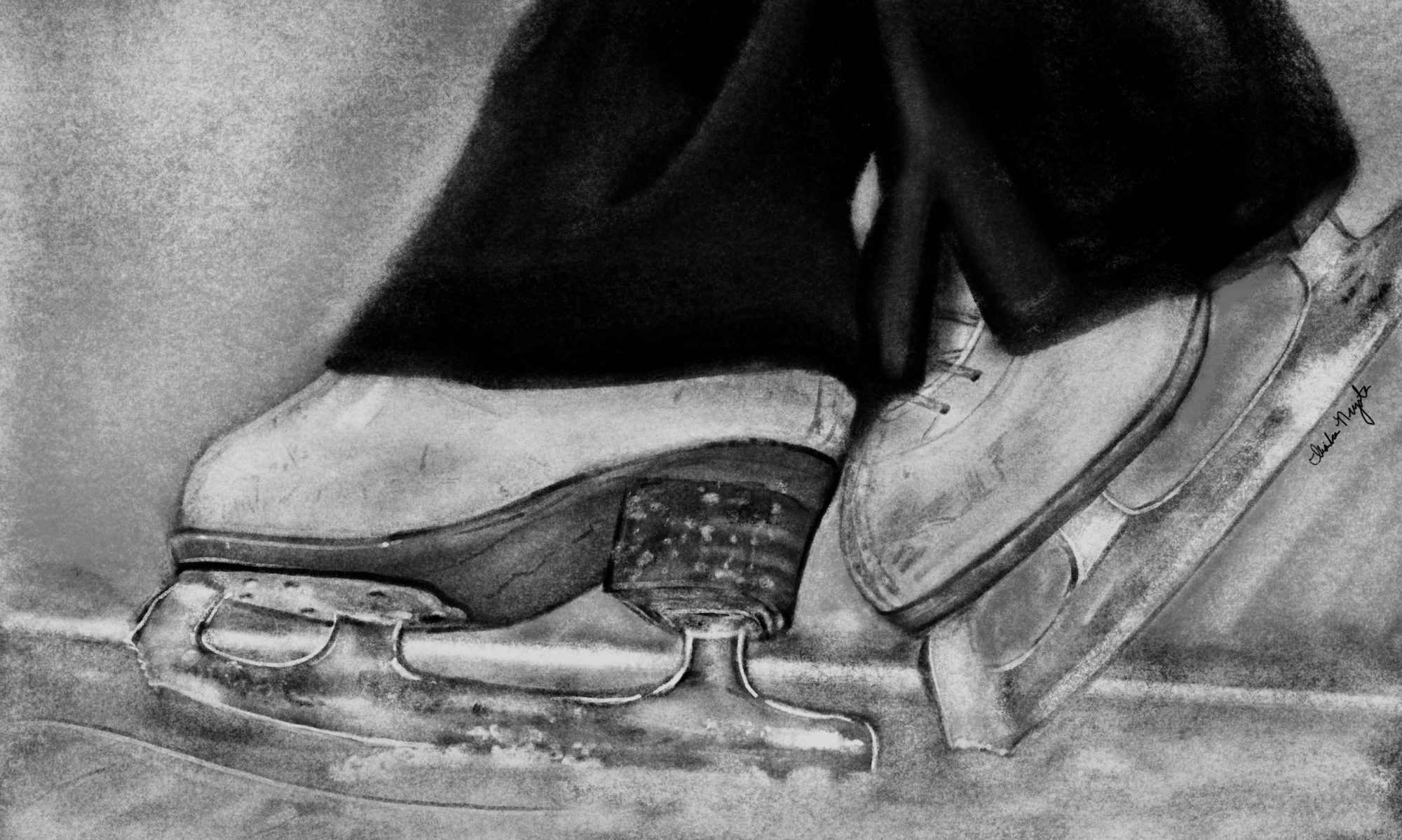Pop. Pop. Pop.
Circle. Circle. Circle.
Pop. Pop. Pop.
“C’mon, Skatergirl,” Skatercoach said. “You have to rotate.”
Skatergirl nodded and took a deep breath. Then, she clapped her hands together and readied herself.
This time. This time for sure she would rotate her stupid triple flip.
Circle. Circle. Pop.
“That’s enough,” Skatercoach said. “It doesn’t look like it’s going to work today. Let’s move on.”
Skatergirl nodded. Frustration building in her heart.
Once again, she hadn’t been able to do a single triple flip. Once again, she’d failed.
It all started a month earlier. Skatergirl was practicing triple flips in her lesson with Skatercoach, when she did one that was sideways and fell hard on her hip. The next day she was so bruised that she wasn’t able to get out of bed, and she’d been forced to stay off of the ice for several days.
When she returned to training, Skatercoach avoided having Skatergirl practice triple flips for several days. Instead, they worked on some of the easier jumps that Skatergirl was more comfortable with in order to rebuild her confidence.
However, when they finally returned to working on triple flips, Skatergirl fell apart. She could do single and double flips just fine, but when it came time to practice triple flips she couldn’t get herself to rotate, and instead spent all her time circling and popping.
After the session, Skatercoach pulled Skatergirl aside. “Listen, Skatergirl. There’s nothing wrong with your triple flip. You could do them fine before, so you just have to overcome whatever mental blocks are holding you back.”
“Right.” Skatergirl said. “I’ll try my best.”
The weekend arrived and Skatergirl had a session with Mentalgamecoach.
“I’m having a lot of trouble with my triple flip,” she said. “I used to be able to do them fine, but ever since I took that fall a couple of weeks ago I haven’t been able to do them to save my life.”
“I see,” Mentalgamecoach said. “When you’re practicing your triple flip, what’s going through your mind?”
“Ever since the injury, the only thing I’ve been able to think about is not going sideways.”
“Ah. Ok. When you’re thinking about not going sideways, you’re in your front brain and not focused on doing the jump.
“Skatercoach has mentioned muscle memory to you, right?”
“Yup.”
“Well, muscle memory is stored in your hindbrain. That is where your triple flip and all your complex motor patterns are.
“When you think or worry, you are in your front brain. When you are in your front brain, you can’t be in your hindbrain, and vice versa.
“While you can execute your triple flip when you’re stuck in your front brain, it’s a lot easier to execute it when you’re in your hindbrain.”
“Ok, but how do I get out of my front brain?”
“In order to get into your hindbrain you need to get back into your body. Say, does Skatercoach give you drills or exercises to help with your triple flip?”
“She does.”
“Great.” “Drills and exercises break down skills into manageable pieces that you can practice without having to think. This is a way to get out of your front brain and into your hindbrain.
“During this coming week, double down on the number of drills you do, and when you’re working on drills, really focus on what the movements feel like in your body. Do each drill until you are immersed in what you are doing. Then move onto the next harder step.
“Once you’re out of your front brain, do a few triple flips. Circling is a sign that you’re in your front brain, so if you find yourself circling more than 2 times in a row, go and do more drills to bring you back into your body and your hindbrain.
“If for whatever reason you aren’t able to get out of your front brain, maybe give the triple flip a rest for that day. Keep in mind that the triple flip exercises and practicing other jumps all help to develop the triple flip. By not forcing the triple flips, you will be able to come back to it fresh on your next practice session.”
Mental skills training can help to keep your emotions on an even keel so that you can practice and compete your best.
Start here; download “Confidence Myth Busters,” a complimentary eBook and make a change.

